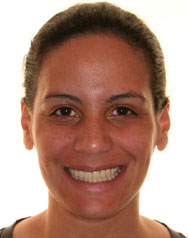TMD/TMJ

Temporomandibular Disorder
Millions of Americans suffer from chronic facial and neck pain as well as recurrent headaches. In some cases this pain is due to Temporomandibular Disorder, or TMD. Dr. Vardy was the 1995 orthodontic specialist in the TMJ Clinic at NYU College of Dentistry.
Your temporomandibular joints, or jaw joints, connect your lower jawbone to your skull. As you may imagine, these joints get quite a lot of use throughout the day as you speak, chew, swallow, and yawn. Pain in and around these joints can be unpleasant and may even restrict movement.
Symptoms of TMD include:
- Pain in the jaw area
- Pain, ringing, or stuffiness in the ears
- Frequent headaches or neck aches
- Clicking or popping sound when the jaw moves
- Swelling on the sides of the face
- Muscle spasms in the jaw area
- A change in the alignment of top and bottom teeth
- Locked jaw or limited opening of the mouth
Should you notice any of these symptoms, let us know! We can help advise you as to whether they indicate the presence of TMD, and what sort of treatment is appropriate for you.
If you don't have any of these symptoms, let's keep it that way! There are some simple things you can do at home or work to prevent TMD from occurring in your jaw joints:
- Relax your face - remember the rule: "Lips together, teeth apart"
- Avoid grinding your teeth
- Avoid constant gum chewing
- Don't cradle the phone receiver between your head and shoulder - either use a headset or hold the receiver to your ear
- Chew food evenly on both sides of your mouth
- Do not sit with your chin rested on your hand
- Practice good posture - keep your head up, back straight, and shoulders squared











